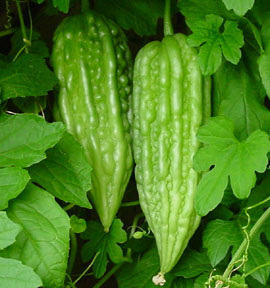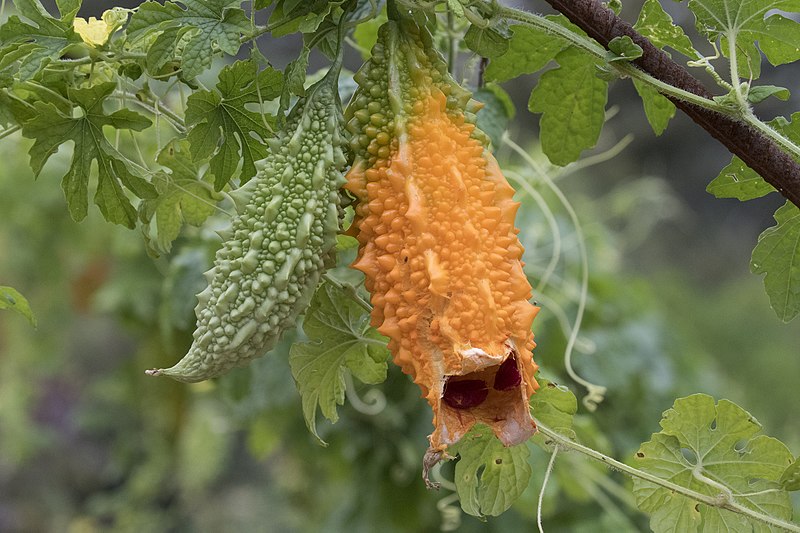Bitter Melon Seeds
Useful gardening
information
A mainstay of local oriental produce markets,
especially during the warm summer months, bitter melon is a
common vegetable consumed by millions around the world -- not
only in the Far East, but also in many Central and South
American and Caribbean countries. In the western hemisphere, it
seems to be better known as an annual ornamental vine than as a
food, with lovely, deeply cut leaves and bearing pretty fruits
called balsam pears that ripen to a dramatic orange red.
Its bitterness comes from the high concentration of quinine
it contains, which incidentally, is the reason why it is
regarded by Asians, as well as Panamanians and Colombians, as a
valuable drug for preventing and treating malaria.
The vast majority of Americans who have tried bitter melon
probably found the experience quite unpleasant, not something
they would ever want to repeat. But really, bitter melon is a
delicious vegetable -- when cooked right and when latent taste
buds on the tongue are given the chance to become acquainted
with the most misunderstood and maligned of the five primary
flavors. Moreover, it is immensely nutritious.
Rich in iron, bitter melon has twice the beta carotene of
broccoli, twice the calcium of spinach, twice the potassium of
bananas, and contains vitamins C and B 1 to 3, phosphorus and
good dietary fiber. It is believed to be good for the liver and
has been proven by western scientists to contain insulin, act
as an anti-tumor agent, and inhibit HIV-1 infection.
Sowing
Instructions
Direct seed melons in hills 4 ft. apart each way after
soil temperature has reached at least 65 degrees. Plant 8-10
seeds per hill, later thin to 4 plants per hill. Cover with
3/4-1" of soil.
Informative articles found on the
web:
What
is Bitter Melon?
National Bitter Melon
Council

1A119 Common Foo Gwa
(Momordica charantia) Tasty mild bitter fruit gives delicious
flavor to stir-fries and Oriental dishes. 5”-8"
white-green colored bumpy fruit turn a beautiful deep orange.
When overripe they pop open. The seeds are covered in a good
amount of bright red jell, that tastes like cherry candy.
Ornamental vines give good yields. They thrive in hot weather
and are not bothered by insects or wilt. Aka Balsam pear, it
has been used medicinally for hundreds of years. Can be hard to
germinate.

TRZ135 Common Wild Bitter Melon ( Momordica charantia )
The most widely known Bitter Melon. Vines bear lots of small natural bitter melons.
A tropical vine with long, slender shoots, deeply lobed leaves and warty, oblong fruits that are edible when young and green but turn very bitter when mature and yellow. When fully ripe, the fruits break open to reveal seeds covered in soft, bright red and edible, sweet pulp.



